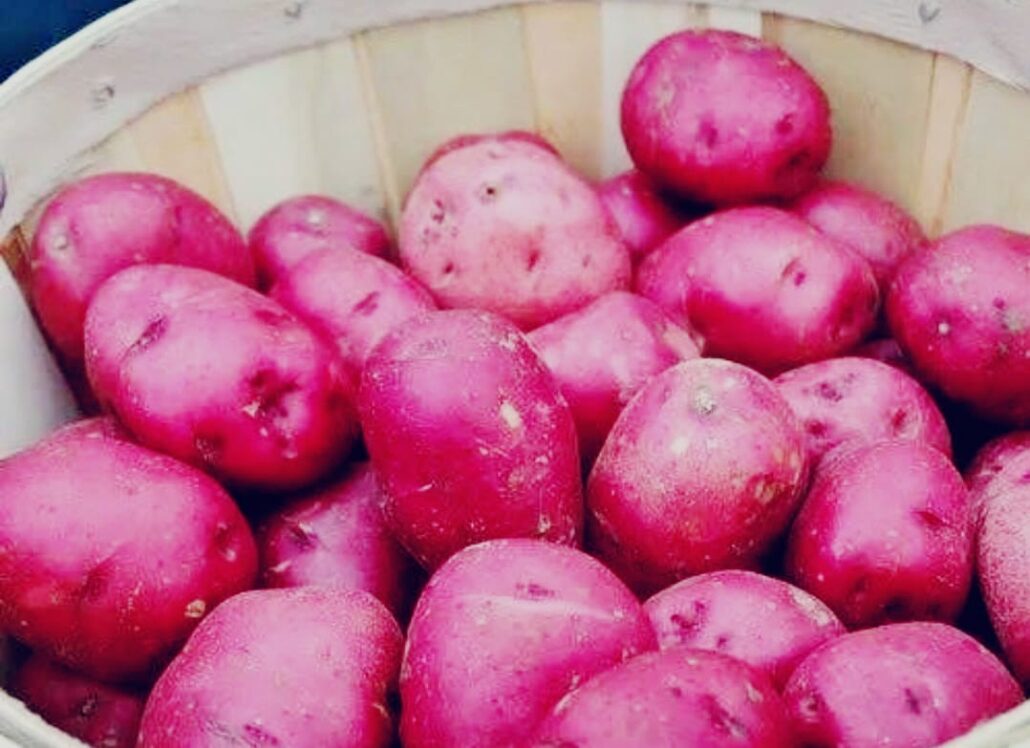
The indigenous Hirpora Red Potato, renowned for its unique taste and texture, is on the brink of extinction, locals in the Hirpora area of south Kashmir have warned.
Hirpora, located along the historic Mughal Road and surrounded by the Hirpora Wildlife Sanctuary, is traditionally known for its potato cultivation.
Once a staple crop grown by many in the region, the production of this prized variety, also known as ‘Katt-e-Maaz Aolu’ (Mutton Potato), has sharply declined, with only a handful of farmers continuing to cultivate it.
Speaking to the news agency—Kashmir News Observer (KNO), residents from Hirpora said that the potato, known throughout India for its distinct flavour and crunch, has seen a dramatic reduction in cultivation due to factors like excessive use of chemical fertilisers, outbreaks of diseases and poor yields.
“A decade ago, almost every household in Hirpora grew this red potato. Now, only 10 to 20 households out of the 800 in the village continue to grow it, and even then, only on a very small scale,” said Abdul Rehman, a local farmer.
The Hirpora Red Potato is more labour-intensive to grow than the regular potato as it requires more effort, fertilisers and time.
As a result, its market price is approximately three to four times higher than the common potato, which further discourages its cultivation.
Despite the decline, locals remain hopeful, with some still continuing to grow the prized crop in small quantities.
They believe the government can play a key role in its revival by procuring seeds from these farmers and distributing them to other growers after ensuring that the seeds are disease-free and properly checked.
Experts said the shift in farming practices, particularly the increasing plantation of apple orchards in the region, has negatively affected the quality and quantity of the potatoes.
They said the encroachment of apple farming has led to changes in the soil composition and microclimate, which in turn has impacted the cultivation of potatoes.
“People from across Kashmir used to come here to buy our potatoes,” said a grower. “We even tried other potato varieties, but none have survived in this region like the Hirpora Red. This potato has unique qualities, and it thrives best at altitudes above 1,600 metres. Hirpora and the nearby Sedow area are ideal for growing it.”
Acknowledging the decline in production, an official from the Agriculture Department said the government is aware of the situation and has submitted two projects for the revival of the Hirpora Red Potato to higher authorities, including the Sher-e-Kashmir University of Agricultural Sciences and Technology (SKUAST).
“The department is actively working to revive this indigenous variety,” said the official.
“One farmer has agreed to offer his land for trial purposes, and we will be sourcing seeds from those still growing the red potato. These seeds will be tested for diseases, and we will work with experts from SKUAST to find out why the potato’s production is low and why the size remains small.”
The department is also conducting soil tests to determine the best conditions for cultivation. Krishi Vigyan Kendra (KVK) in Balpora is separately working on a revival programme.
“This red potato has the potential to boost the local economy,” the official added. “It thrives at high altitudes, which makes it well-suited to areas like Hirpora and Sedow. We are considering all factors, including the causes of low yields and the potential diseases affecting the crop, as part of our revival efforts. We are confident that with the cooperation of local farmers, we will succeed.”—(KNO




